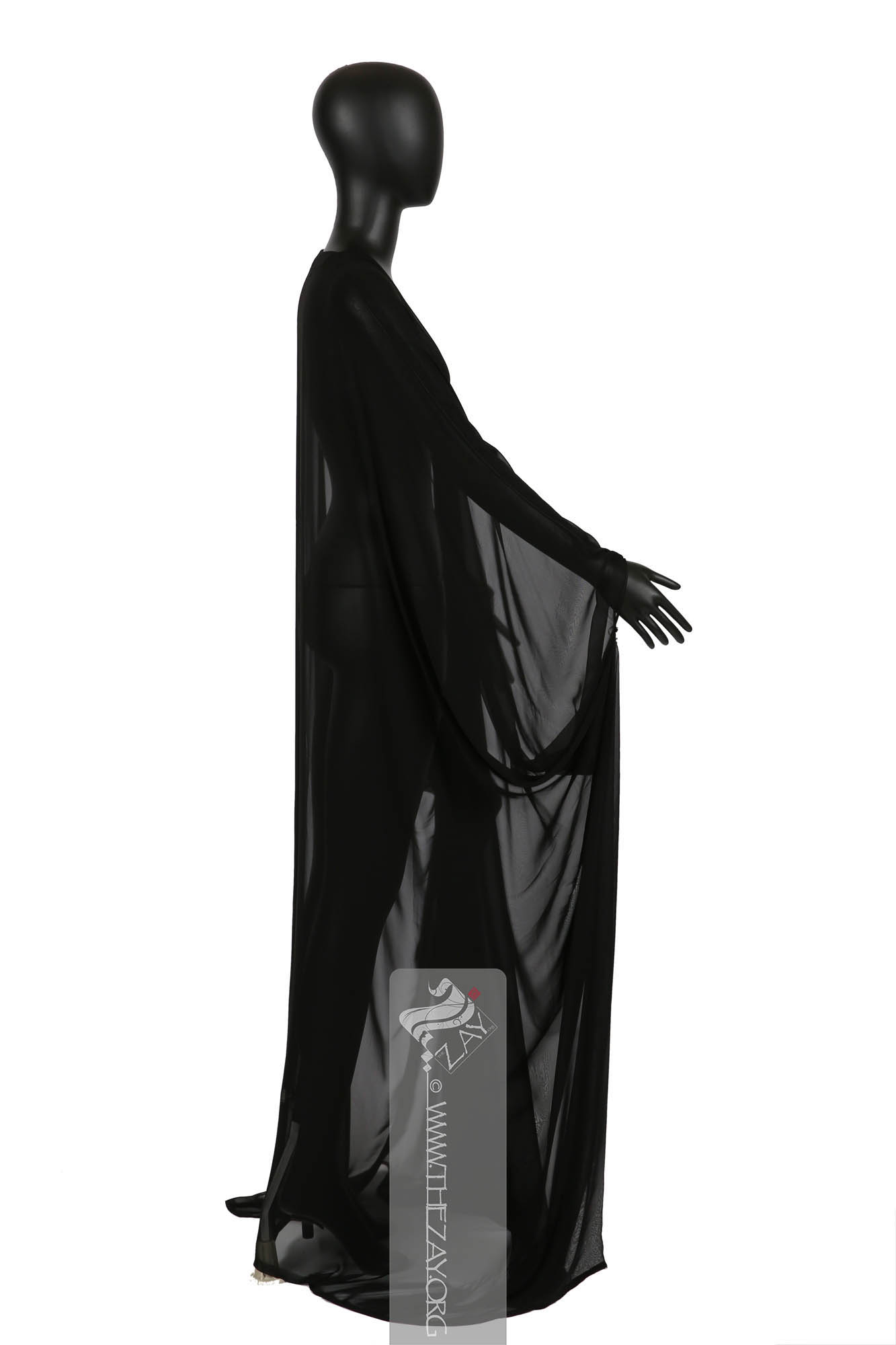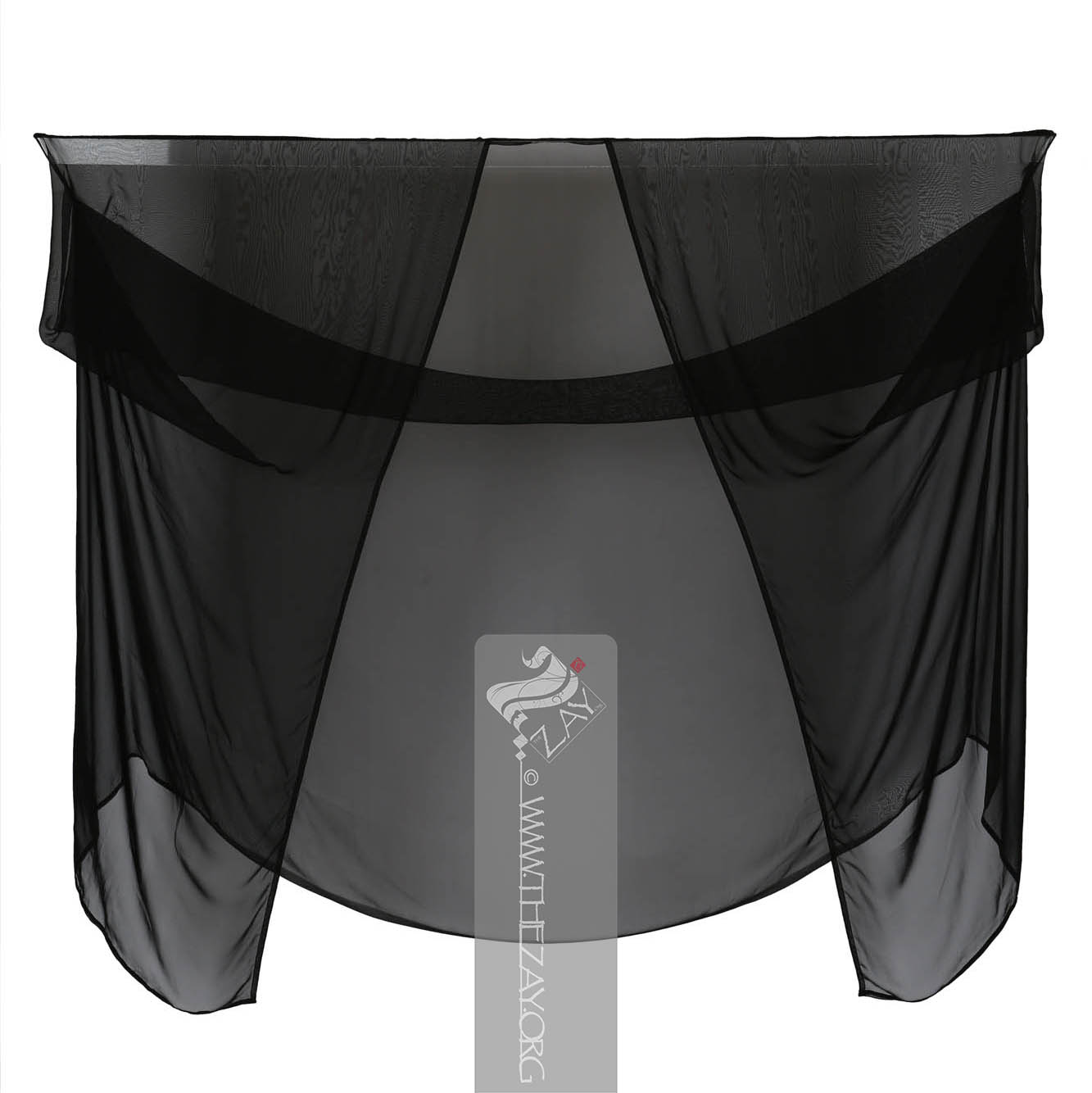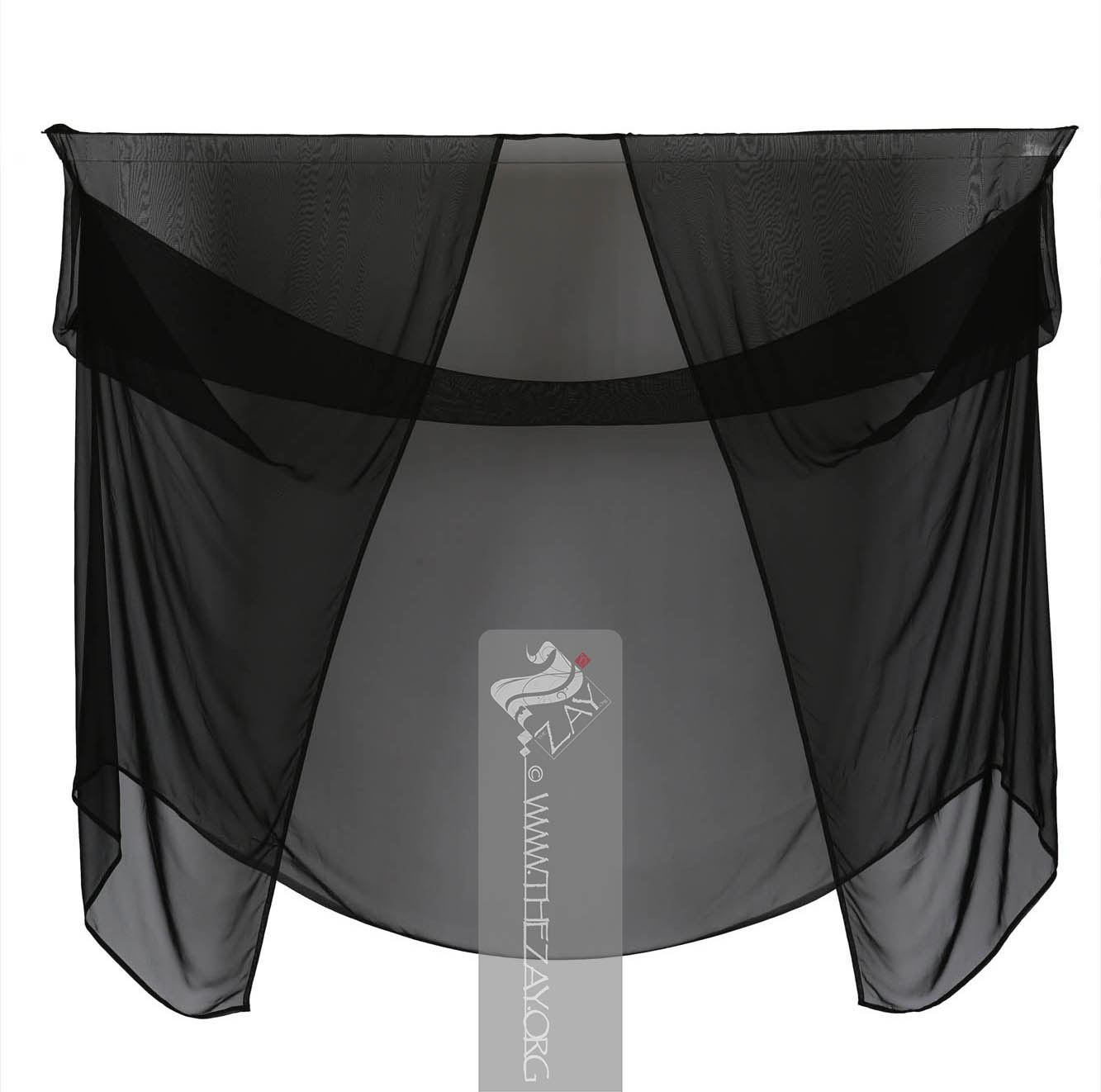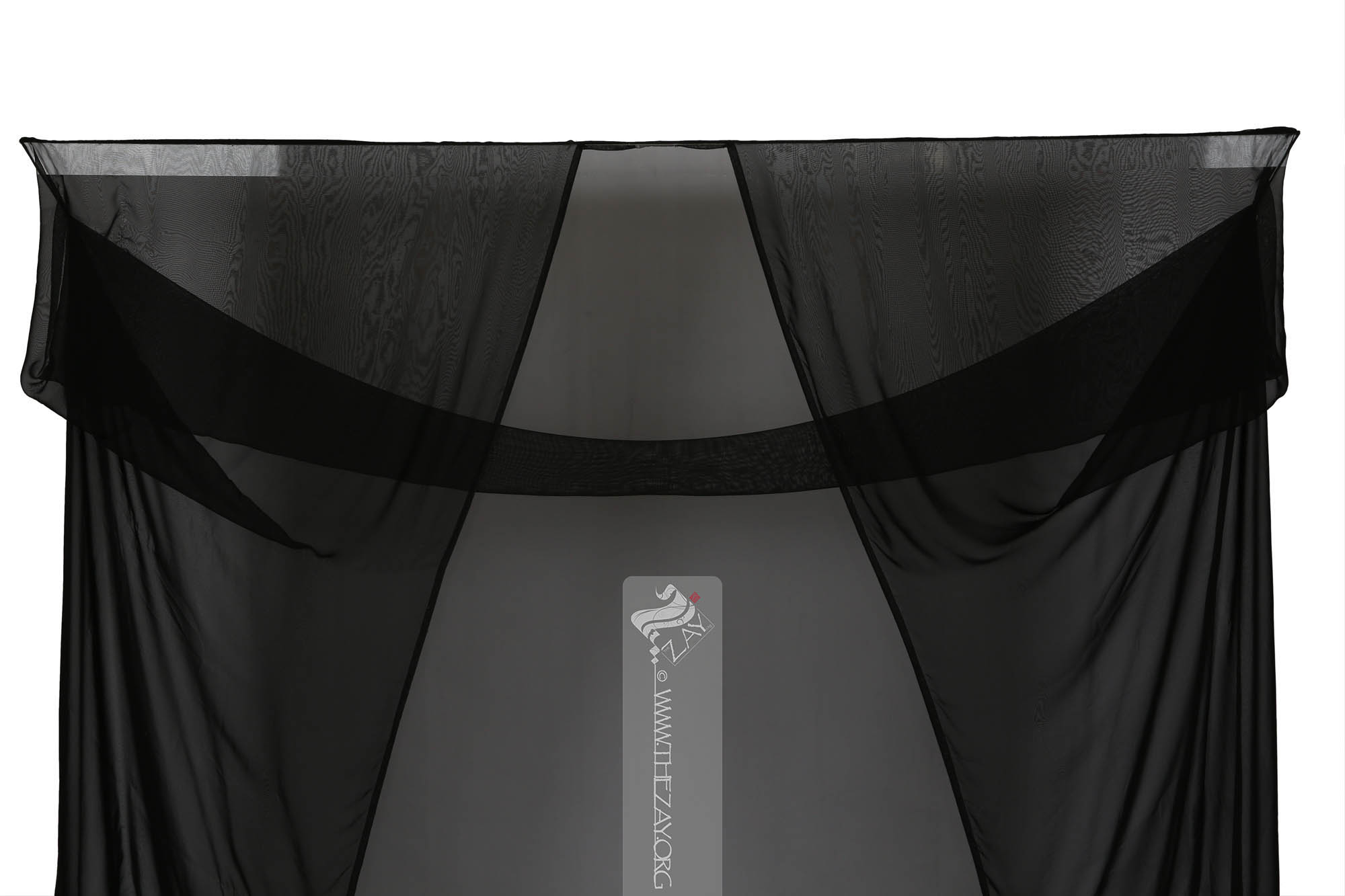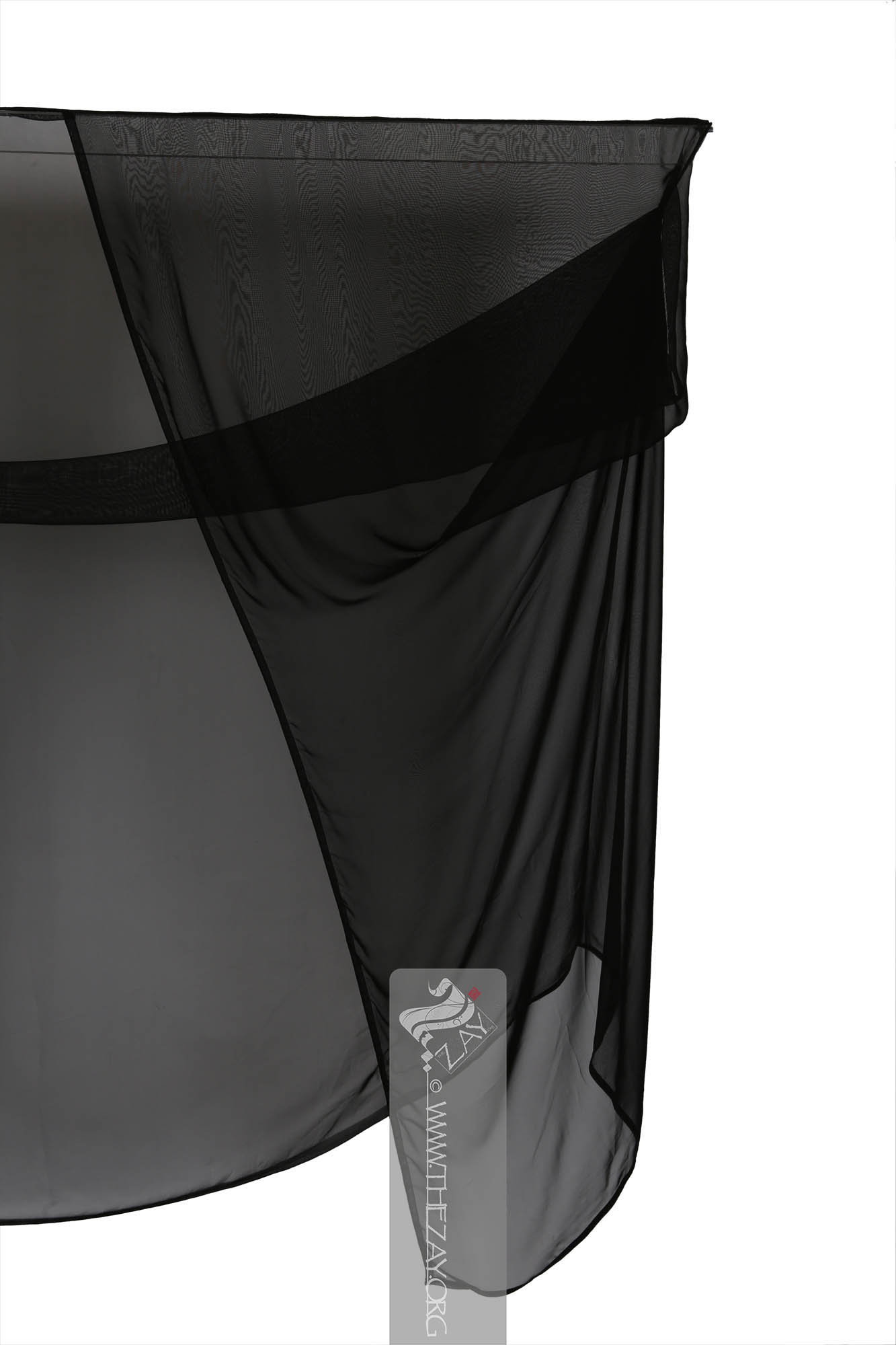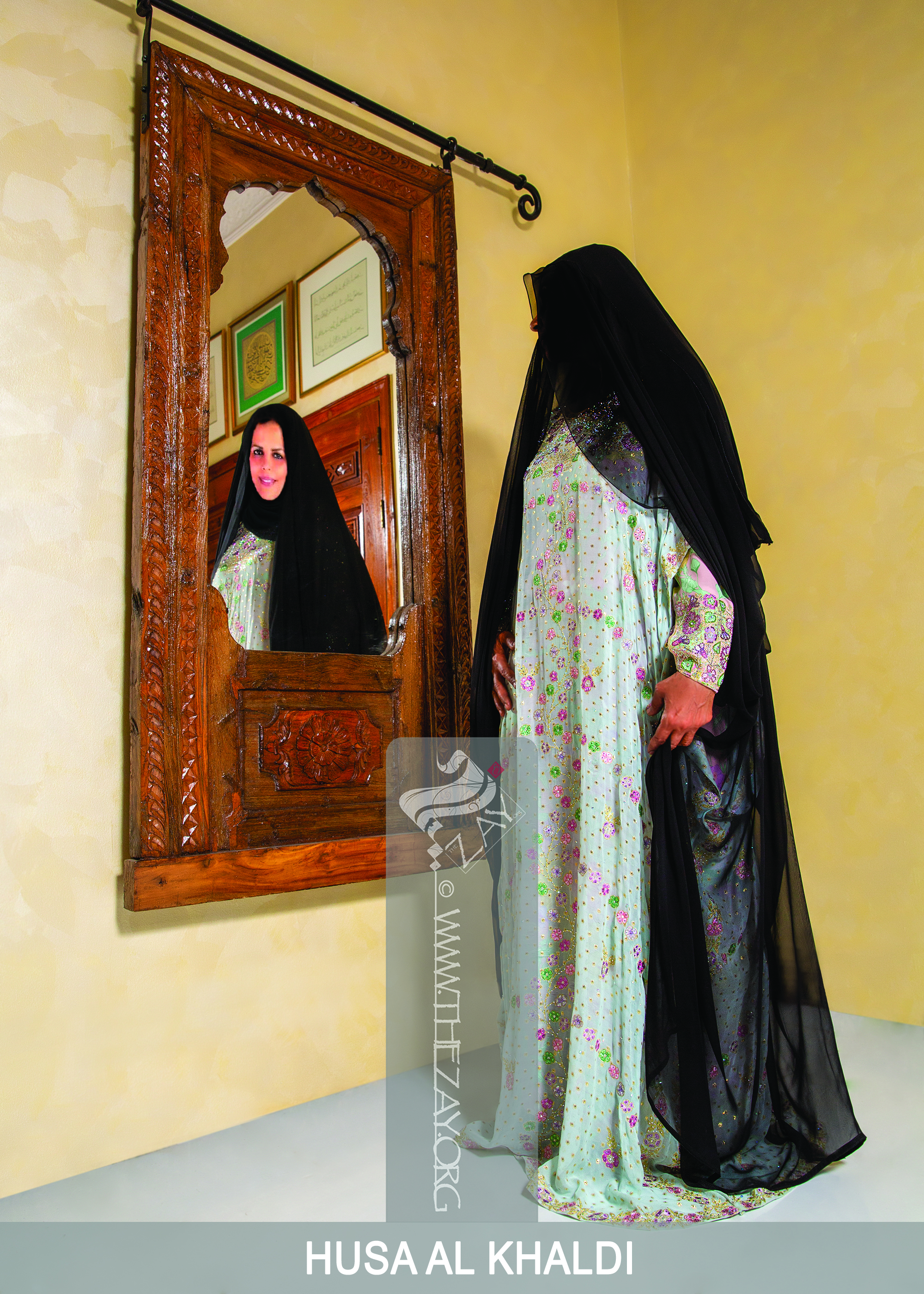Object Note This cloak (
abayah
‘Abāyah: (Arabic: cloak, Pl. ‘abāyāt, or ‘Ibī. In Classical Arabic: ‘abā’ah, pl: ‘abā’āt, synonyms: ‘Abā, ‘abāh, ‘abāt, dafah
Daffah : (Arabic: side, synonyms: ‘Abā, ‘abāyah, ‘abāh, ‘abāt, bisht or mishlaḥ), long, wide, and sleeveless outer cloak worn in public by both sexes. In time this article of dress evolved and changed in shape, style, and function., bisht, or mishlaḥ), long, wide, and sleeveless outer cloak worn in public by both sexes. In time this article of dress evolved and changed in shape, style, and function.) was acquired at Abdullah (
Khunji
Khunjī: Abdullah Hussain Khunjī is a renowned Emirati fabric merchant of Iranian origin. He opened the first specialised textile store in Abu Dhabi central market after returning from a trip to Switzerland companying the late UAE founding father Shaikh Zayed bin Sultan al Nahyan early 1970’s. Today he commands a fleet of stores and businesses across the seven emirates.) store in Abu Dhabi during the 1990s. Abdullah is one of the Emirates' earliest and most prominent fabric merchants.
Dr. Reem Tariq
Ṭariq: (Arabic; Synonym: tulle_bi_talli; talli; badla; khus_dozi ), series of small metal knots made on a woven net ground as embellishment. The term is commonly used in the Levant Arab region specifically in Lebanon.
el Mutwalli
Dr. Reem Tariq
Ṭariq: (Arabic; Synonym: tulle_bi_talli; talli; badla; khus_dozi ), series of small metal knots made on a woven net ground as embellishment. The term is commonly used in the Levant Arab region specifically in Lebanon.
el Mutwallī: Founder (CEO) of the Zay
Zay: (Arabic: costume, Pl. azyaā’), a set of clothes in a style typical of a particular country or historical period. Initiative, a public figure, speaker and author. An expert curator and consultant in Islamic art and architecture, interior design, historic costume, and UAE heritage. knew Abdullah from childhood as her mother was one of his early clients.
Object FeaturesAs a whole any cloak (
abayah
‘Abāyah: (Arabic: cloak, Pl. ‘abāyāt, or ‘Ibī. In Classical Arabic: ‘abā’ah, pl: ‘abā’āt, synonyms: ‘Abā, ‘abāh, ‘abāt, dafah
Daffah : (Arabic: side, synonyms: ‘Abā, ‘abāyah, ‘abāh, ‘abāt, bisht or mishlaḥ), long, wide, and sleeveless outer cloak worn in public by both sexes. In time this article of dress evolved and changed in shape, style, and function., bisht, or mishlaḥ), long, wide, and sleeveless outer cloak worn in public by both sexes. In time this article of dress evolved and changed in shape, style, and function.), (
bisht
Bisht: (Arabic: bjd or bjād: cloak, Akkadian: bishtu or Persian: back, pl. bshūt synonyms: ‘Abā,‘abāyah, ‘abāh, ‘abāt, dafah
Daffah : (Arabic: side, synonyms: ‘Abā, ‘abāyah, ‘abāh, ‘abāt, bisht or mishlaḥ), long, wide, and sleeveless outer cloak worn in public by both sexes. In time this article of dress evolved and changed in shape, style, and function., or mishlaḥ), long, wide, and sleeveless outer cloak worn in public by men. In time this article of dress evolved and changed in shape, style, and function.), (
mishlah
Mishlaḥ: (Arabic: to take off, synonyms: ‘Abā, ‘abāyah, ‘abāh, ‘abāt, dafah
Daffah : (Arabic: side, synonyms: ‘Abā, ‘abāyah, ‘abāh, ‘abāt, bisht or mishlaḥ), long, wide, and sleeveless outer cloak worn in public by both sexes. In time this article of dress evolved and changed in shape, style, and function. or bisht), long, wide, and sleeveless outer cloak worn in public by men. In time this article of dress evolved and changed in shape, style, and function.), (
dafah
Daffah : (Arabic: side, synonyms: ‘Abā, ‘abāyah, ‘abāh, ‘abāt, bisht or mishlaḥ), long, wide, and sleeveless outer cloak worn in public by both sexes. In time this article of dress evolved and changed in shape, style, and function.), is generally constructed from two rectangular pieces of fabric of equal length (
fajatayn
Fajatayn: (Arabic: fajah: strip between two mountains), two strips, bolts or lengths of fabric used to measure finished cloth.) sewn together horizontally (
hashiyah
Ḥāshīyah: (Arabic: A margin, gloss, or footnote), the narrow-patterned border running down the sides of a shawl
Shawl: (Persian: shāl from Hindi: duśālā – Shoulder Mantle), a shawl is a South Asian version of a scarf
Scarf: (English), usually a rectangular piece of cloth loosely worn over the shoulders, upper body and arms, and sometimes also over the head. worn or wrapped loosely over the shoulders and is usually made of wool. .) or (
khabun
Khabun: (Arabic), refers to the seam line in the middle of a garment, generally found on cloaks (‘ibī) and overgarments (athwāb), to shorten or lengthen it.).
The two outer edges of each length (
fajah
fajah: (Arabic: Fujah: gap between two mountains), denotes a single length of fabric.) are folded to the middle and sewn at the top to create the shoulder line. The lengthwise folded sides (fajatayin) thus leave an opening in the middle running the length of the front body section.
Two small holes are opened at the folded line, on the top corners of each shoulder line to allow the hands to pass through creating the sleeves without having to cut and add a sleeve as in most clothes.
From the 1990s onwards new versions appeared, such as this one, where the fabric came in wider widths so there was no need for the earlier central hemline (
khat
Khaṭ: (Arabic: line, pl. khtūt). al
khabun
Khabun: (Arabic), refers to the seam line in the middle of a garment, generally found on cloaks (‘ibī) and overgarments (athwāb), to shorten or lengthen it.), a step in the continuing evolution of the
abayah
‘Abāyah: (Arabic: cloak, Pl. ‘abāyāt, or ‘Ibī. In Classical Arabic: ‘abā’ah, pl: ‘abā’āt, synonyms: ‘Abā, ‘abāh, ‘abāt, dafah
Daffah : (Arabic: side, synonyms: ‘Abā, ‘abāyah, ‘abāh, ‘abāt, bisht or mishlaḥ), long, wide, and sleeveless outer cloak worn in public by both sexes. In time this article of dress evolved and changed in shape, style, and function., bisht, or mishlaḥ), long, wide, and sleeveless outer cloak worn in public by both sexes. In time this article of dress evolved and changed in shape, style, and function..
This more contemporary silk chiffon cloak
abayah
‘Abāyah: (Arabic: cloak, Pl. ‘abāyāt, or ‘Ibī. In Classical Arabic: ‘abā’ah, pl: ‘abā’āt, synonyms: ‘Abā, ‘abāh, ‘abāt, dafah
Daffah : (Arabic: side, synonyms: ‘Abā, ‘abāyah, ‘abāh, ‘abāt, bisht or mishlaḥ), long, wide, and sleeveless outer cloak worn in public by both sexes. In time this article of dress evolved and changed in shape, style, and function., bisht, or mishlaḥ), long, wide, and sleeveless outer cloak worn in public by both sexes. In time this article of dress evolved and changed in shape, style, and function. is worn draped off the shoulder (
abayat_chatif
‘Abāyat_chatif: (Arabic: ‘Abāyah: outer cloak, chatif: Katif: shoulder), in most of the Arab Gulf region the term is used when an outer cloak (‘Abāyah) is worn draped off the shoulders. Colloquially, the letter (kāf) is pronounced (cha) in many Arab dialects.) in public, social, or celebratory occasions. It is customarily accompanied by a matching narrow veil (
shaylah
Shaylah: (Colloquial Gulf Arabic), a length of fabric used as shawl
Shawl: (Persian: shāl from Hindi: duśālā – Shoulder Mantle), a shawl is a South Asian version of a scarf
Scarf: (English), usually a rectangular piece of cloth loosely worn over the shoulders, upper body and arms, and sometimes also over the head. worn or wrapped loosely over the shoulders and is usually made of wool. , head cover or veil. Also known as (wigāyah) or (milfa
Milfa’: (Arabic: to cover), shawl
Shawl: (Persian: shāl from Hindi: duśālā – Shoulder Mantle), a shawl is a South Asian version of a scarf
Scarf: (English), usually a rectangular piece of cloth loosely worn over the shoulders, upper body and arms, and sometimes also over the head. worn or wrapped loosely over the shoulders and is usually made of wool. or veil worn by women in the Arab Gulf regions and some areas of the Levant to cover the head.’), generally made from sheer fabrics such as tulle (tūr), cotton gauze (wasmah
Wasmah: (Arabic: woad), is derived from the woad herb (wasmah) used to dye the cotton gauze black. It is mainly used for headcovers or veils and overgarments in most of the Arab gulf region.) (nidwah) or (Nīl), or silk chiffon (sarī).), wide enough to cover the head without overpowering the look of the cloak underneath. It is cut on the bias to create a cape silhouette as an added novelty.
It is still the custom in many regions of the Gulf, especially in the Emirates, that women do not take off their
abayah
‘Abāyah: (Arabic: cloak, Pl. ‘abāyāt, or ‘Ibī. In Classical Arabic: ‘abā’ah, pl: ‘abā’āt, synonyms: ‘Abā, ‘abāh, ‘abāt, dafah
Daffah : (Arabic: side, synonyms: ‘Abā, ‘abāyah, ‘abāh, ‘abāt, bisht or mishlaḥ), long, wide, and sleeveless outer cloak worn in public by both sexes. In time this article of dress evolved and changed in shape, style, and function., bisht, or mishlaḥ), long, wide, and sleeveless outer cloak worn in public by both sexes. In time this article of dress evolved and changed in shape, style, and function. at larger gatherings, such as weddings and family celebrations, or even at female only events. However, since the fabric is generally very sheer silk chiffon it allows the silhouettes of the heavily embroidered clothes worn underneath to be visible.
If removed, the article was customarily folded into the smallest possible square, tucked snuggly under one underarm, or placed under its wearer, when seated, so as to not be mixed up with someone else’s cloak. At present, elaborate dressing rooms (
abayah
‘Abāyah: (Arabic: cloak, Pl. ‘abāyāt, or ‘Ibī. In Classical Arabic: ‘abā’ah, pl: ‘abā’āt, synonyms: ‘Abā, ‘abāh, ‘abāt, dafah
Daffah : (Arabic: side, synonyms: ‘Abā, ‘abāyah, ‘abāh, ‘abāt, bisht or mishlaḥ), long, wide, and sleeveless outer cloak worn in public by both sexes. In time this article of dress evolved and changed in shape, style, and function., bisht, or mishlaḥ), long, wide, and sleeveless outer cloak worn in public by both sexes. In time this article of dress evolved and changed in shape, style, and function.-rooms), fully decked with makeup and perfume, are created in homes and major social gatherings such as weddings, where guests can hang their cloaks and freshen up both upon arrival or before departure.





